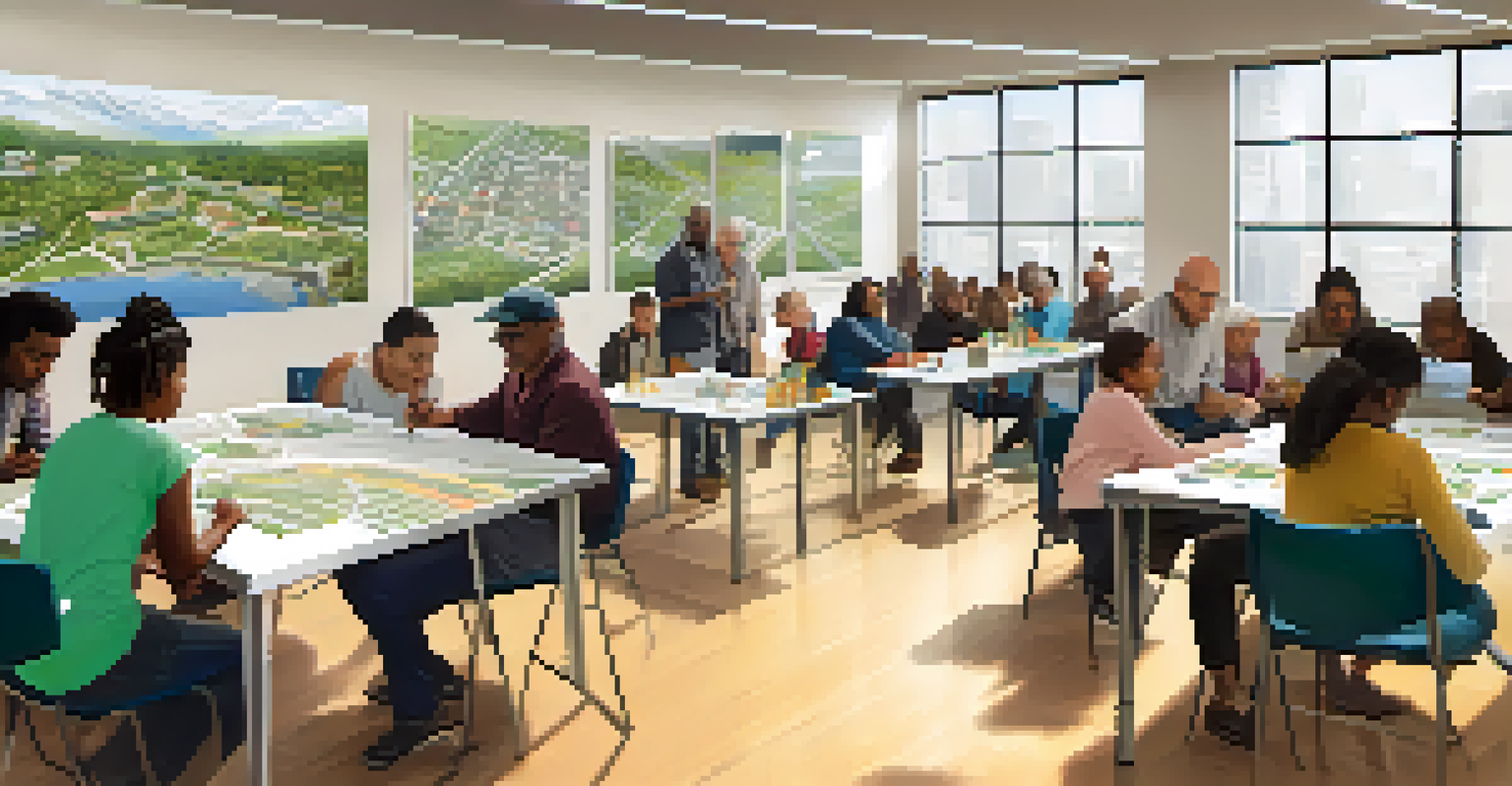Role of Technology in Engaging NYC Residents for Urban Plans

The Importance of Resident Engagement in Urban Planning
Engaging residents in urban planning is crucial for creating spaces that truly reflect community needs. When residents participate, they contribute insights that can lead to more effective and inclusive designs. This collaborative approach not only improves outcomes but also fosters a sense of ownership among community members.
The future of cities depends on the engagement of their residents, as they are the ones who know best what their communities need.
In New York City, where diverse populations coexist, understanding different perspectives becomes even more vital. Each neighborhood has its unique character and challenges, making resident input essential in crafting tailored urban solutions. By valuing their voices, urban planners can create environments that resonate with the local culture.
Ultimately, involving residents builds trust between communities and city officials. When people feel heard and seen, they are more likely to support urban initiatives, leading to smoother implementation and greater satisfaction with public spaces.
How Technology Facilitates Community Participation
Technology has revolutionized the way residents engage with urban planning processes. Online platforms, social media, and mobile applications allow for real-time feedback and discussions, making it easier for residents to voice their opinions. This accessibility ensures that even the busiest city dwellers can participate, breaking down barriers to engagement.

For example, interactive maps and surveys enable residents to pinpoint areas of concern or suggest improvements. Such tools not only gather data efficiently but also empower individuals by giving them a platform to express their views. This democratization of information fosters a sense of community involvement.
Resident Input Shapes Urban Spaces
Engaging residents in urban planning fosters effective and inclusive designs that reflect community needs.
Moreover, technology allows for transparency in urban planning efforts. Residents can track the progress of projects and see how their input has influenced decisions, creating a feedback loop that encourages ongoing participation.
The Role of Social Media in Urban Planning Engagement
Social media platforms are powerful tools for engaging NYC residents in urban planning discussions. They provide a space for instant communication, allowing city officials to share updates and gather feedback quickly. This immediacy helps keep residents informed and involved in real-time.
Technology can empower communities to participate in the planning process, but we must ensure that everyone has access to these tools.
Hashtags and community groups on platforms like Twitter and Facebook can amplify voices, making it easier for residents to connect with like-minded individuals. These virtual communities foster discussions that transcend geographical barriers and can lead to more diverse input on urban projects.
Additionally, social media campaigns can raise awareness about public meetings and events, encouraging higher turnout. By reaching residents where they already spend their time, city planners can enhance involvement in shaping their neighborhoods.
Utilizing Data and Analytics for Better Urban Planning
Data and analytics play a pivotal role in understanding community needs and preferences. By analyzing demographic information and feedback collected through various digital tools, urban planners can identify trends and tailor their strategies accordingly. This evidence-based approach enhances the effectiveness of urban projects.
For instance, data visualization techniques can highlight areas with high resident engagement or pinpoint locations needing improvement. Such insights can help prioritize projects that will have the most significant impact on the community. This strategic focus ensures resources are allocated efficiently.
Technology Enhances Participation
Digital tools and platforms empower residents to provide real-time feedback, breaking down barriers to engagement.
Moreover, predictive analytics can aid in planning for future growth and challenges. By anticipating changes, city officials can proactively develop plans that accommodate emerging needs, ultimately leading to more sustainable urban environments.
Virtual Reality: Immersive Engagement in Urban Planning
Virtual reality (VR) is emerging as a groundbreaking tool for engaging residents in urban planning. By creating immersive experiences, city officials can help residents visualize proposed developments or changes in their neighborhoods. This hands-on approach allows for deeper understanding and more meaningful feedback.
For instance, virtual walkthroughs of planned parks or community centers can spark excitement and generate constructive criticism. Residents can explore designs and suggest modifications based on their experiences, leading to more community-oriented outcomes. This level of engagement can transform how proposals are received and understood.
Furthermore, VR can cater to diverse audiences, including those who may struggle with traditional planning presentations. By providing an accessible, engaging format, city planners can ensure that everyone's voice is included in the conversation.
Challenges in Implementing Technology for Engagement
While technology greatly enhances engagement efforts, there are challenges to consider. Digital divides exist, particularly in a city as diverse as New York, where not everyone has equal access to technology or the internet. This disparity can lead to underrepresentation of certain communities in the planning process.
Additionally, the rapid pace of technological change can be overwhelming for both residents and planners. Keeping up with the latest tools and platforms requires continuous learning and adaptability, which may not always be feasible. Ensuring that all stakeholders are on the same page is essential for successful engagement.
Future Trends in Urban Engagement
Emerging technologies like AR and AI are poised to transform how residents interact with urban planning efforts.
Moreover, the sheer volume of data generated can be daunting to analyze effectively. Urban planners must have the skills and resources to sift through information and extract meaningful insights, ensuring that resident feedback translates into actionable plans.
Future Trends: The Evolving Landscape of Urban Engagement
As technology continues to evolve, so too will the ways residents engage in urban planning. Emerging tools like augmented reality (AR) and artificial intelligence (AI) could further enhance participation and streamline processes. These innovations promise to create even more interactive and responsive planning environments.
Moreover, the focus on sustainability and smart city initiatives will likely drive new engagement strategies. As communities become more environmentally conscious, residents may seek ways to participate in eco-friendly urban projects, leveraging technology to contribute to greener initiatives.

Ultimately, the future of urban engagement in NYC will hinge on a collaborative approach that blends technology with traditional methods. By continuously adapting to new tools and trends, city planners can ensure they meet the evolving needs of their vibrant communities.